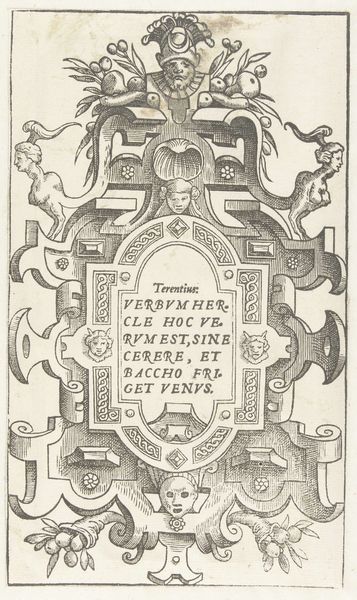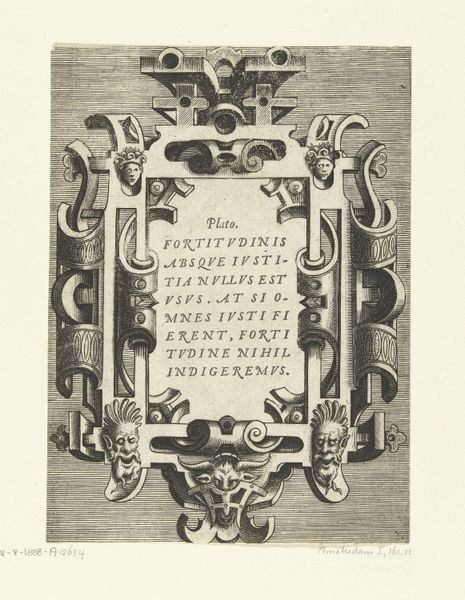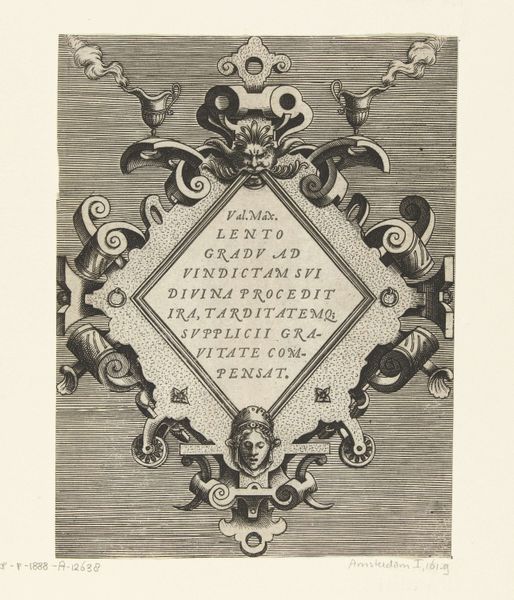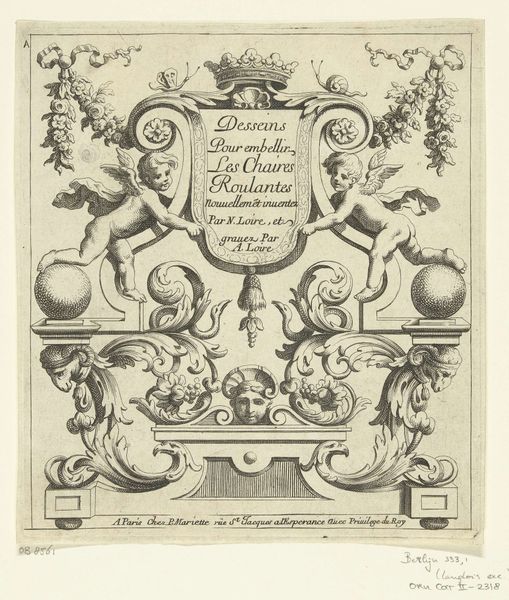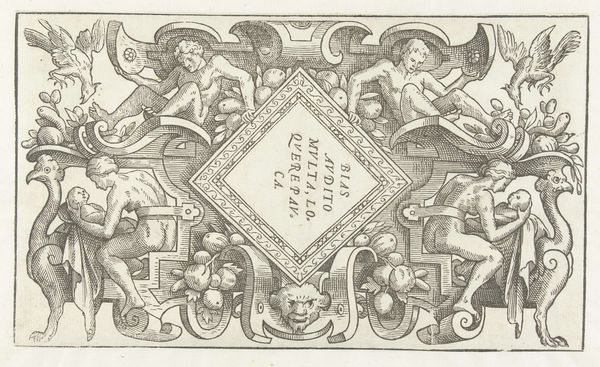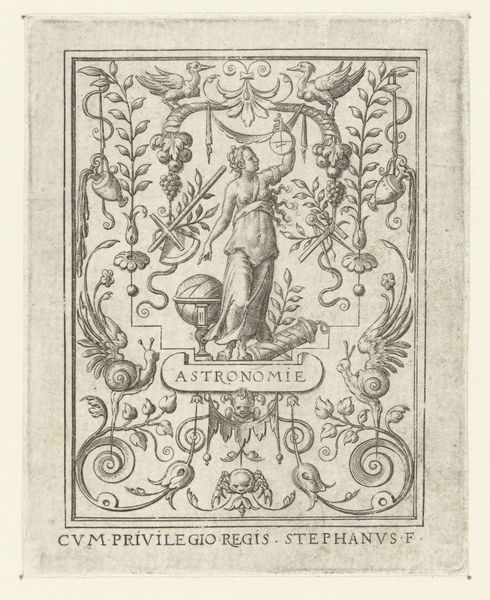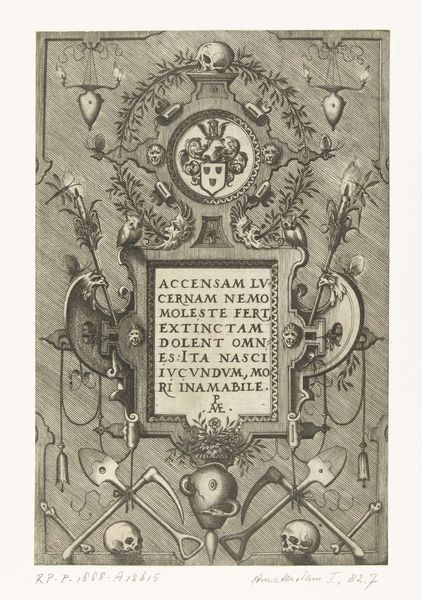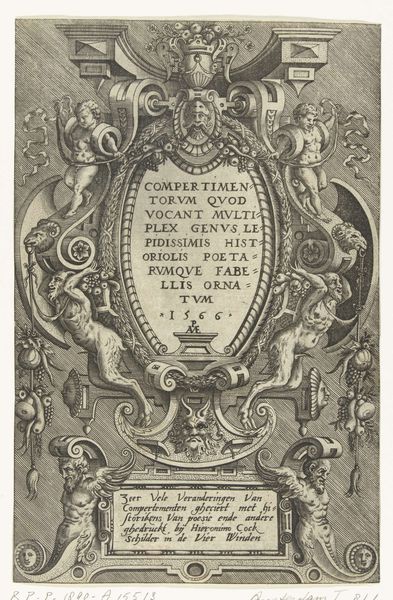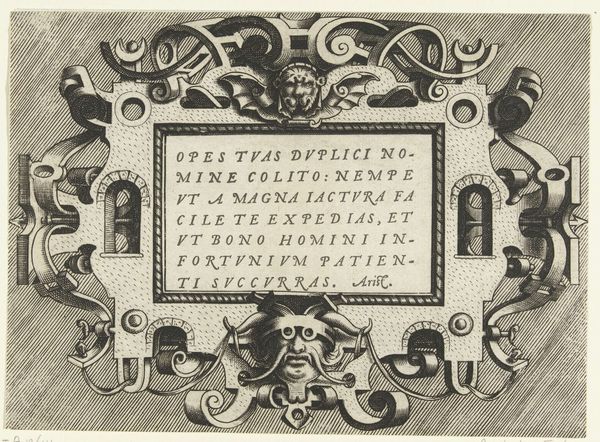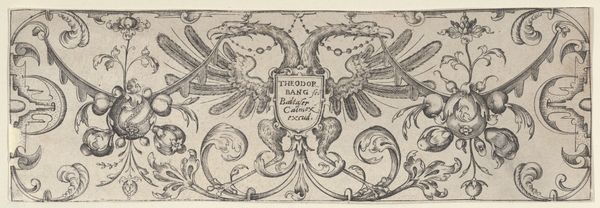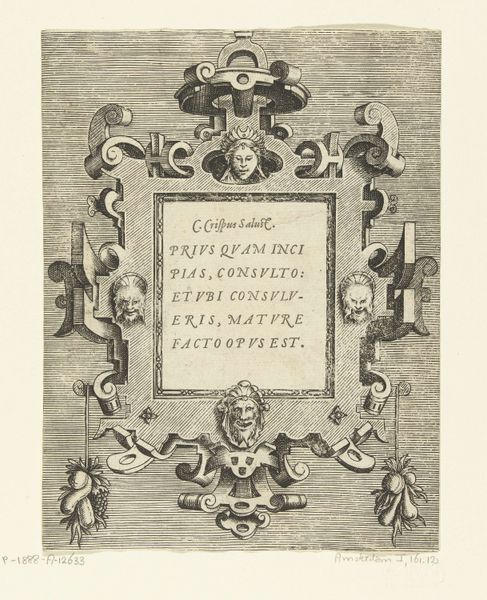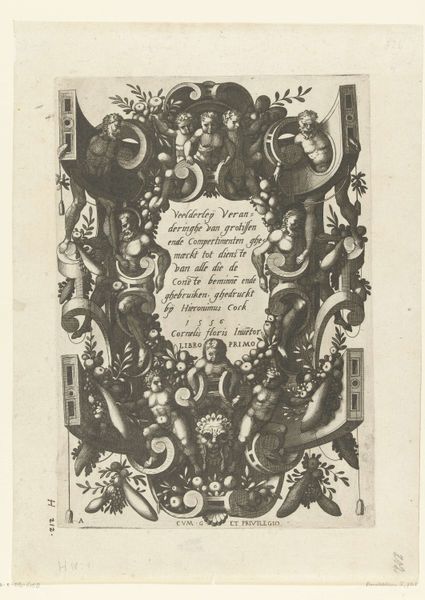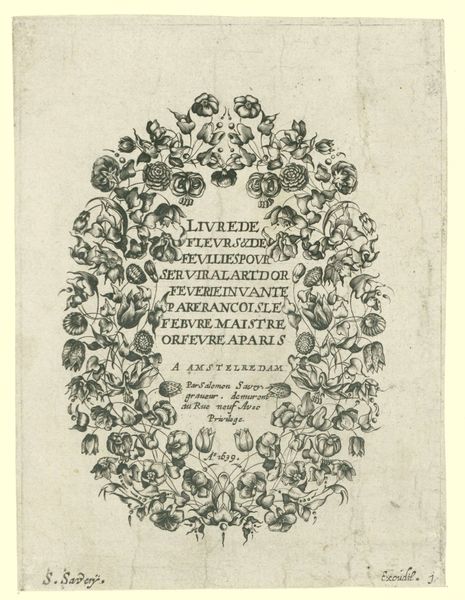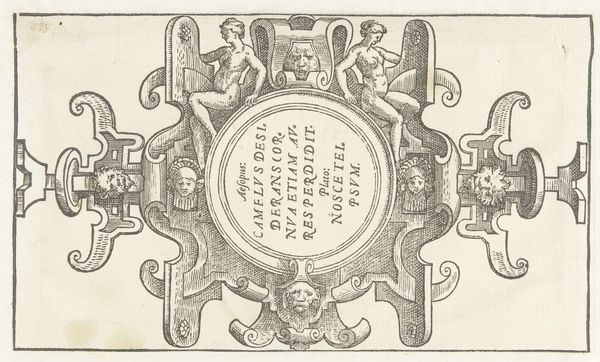
drawing, graphic-art, print, intaglio, ink, engraving
#
drawing
#
graphic-art
#
medieval
# print
#
pen illustration
#
intaglio
#
old engraving style
#
ink line art
#
11_renaissance
#
ink
#
northern-renaissance
#
engraving
Dimensions: height 237 mm, width 139 mm
Copyright: Rijks Museum: Open Domain
Curator: Before us is a striking print titled "Cartouche in de vorm van een kruis," or "Cartouche in the Shape of a Cross," an engraving crafted in 1556. It’s an intriguing piece of graphic art currently held at the Rijksmuseum. Editor: My initial reaction is one of restrained solemnity. The monochrome palette and precisely etched lines evoke a somber yet formal mood. Curator: The formal structure of the print is crucial. Observe the deliberate arrangement of lines and shapes—the cross format immediately grabs the viewer's attention. Editor: Absolutely, and it's interesting to note how this symbolic shape, the cross, would have been viewed by diverse religious and secular groups during the Renaissance. I’m particularly curious about the text within it; it’s not merely decorative, but clearly meant to convey some wisdom or moral imperative of its era. What is that Latin saying really getting at, especially in this socio-political context? Curator: The Latin inscription certainly invites careful consideration. The lettering is presented with such balance within the central cartouche. Its textual presence adds layers of meaning, serving a functional purpose inseparable from the overall visual impact. We should consider the role of Jacob. Apostle's phrase "If God wills" here. Editor: Thinking about its functionality, beyond the inscription itself, how did this image likely circulate? Was it part of a larger publication? Knowing its intended audience and the spaces it inhabited allows us to imagine how it could be instrumentalized, promoting specific social codes or religious agendas prevalent at the time. And that is especially important given that literacy rates were lower at the time, but images could travel quickly as a source of knowledge dissemination. Curator: Considering its meticulous design, my instinct is to highlight the Northern Renaissance influence. Its clear lines and precisely defined details exemplify key aspects of art production in this area. Editor: I appreciate your insight into how such meticulous craftsmanship and composition serve aesthetic principles of its time. Ultimately, as viewers today, it can ignite powerful discussions surrounding art, history, power, and societal shifts reflected within its very framework. Curator: Yes, looking at the cross formation with all the lines working together shows how design plays an important part to create a captivating final artwork.
Comments
No comments
Be the first to comment and join the conversation on the ultimate creative platform.
